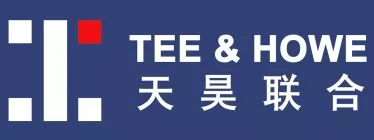On 3 July 2020, the Chinese National People's Congress (NPC) published the second deliberation draft of the fourth amendments to the Chinese Patent Law (the fourth amendments). Toby Mak outlines the changes with his own commentary, at the same time keeping attorneys aware of how the patent laws may still differ from ones they are more familiar with. There are still some striking contrasts – such as one exclusion from patentability, punitive damages, the short limitation period for proceedings and significant penalties for false marking, as well as potential changes in the pharma field reflecting US law (such as term extension and generic drug clearance). Proposed changes to In design law bring more international harmonisation, although the term is only proposed to be extended to 15 years. This article provides an overview of the changes to these fourth amendments for the last five years. While many of the changes in the second deliberation draft are heading in the right direction, some "timely" proposals appear not to have been well thought through, including:
- Adding "first publication for public interest in state emergency or abnormal situation" as an exclusion of non- prejudicial disclosure.
- Adding a complex US-style patent linkage system for drug approval, particularly in an article directed to exclusions from patent infringement.
On 3 July 2020, the Chinese National People's Congress (NPC) published a further draft, for consultation, of amendments to the Chinese Patent Law. This is effectively the fourth draft (but described as the Second Deliberation Draft) of the fourth amendments to the Chinese Patent Law (the fourth amendments) soliciting public comments by the deadline 16 August 2020.
Drafts of the fourth amendments were first proposed by CNIPA in April and December 2015. These were reported in my articles published in the May 2015 and March 2016 issues of the CIPA Journal. The second draft in December 2015 had already proposed many changes from the first draft in April 2015.
The draft fourth amendments then stayed dormant for about three years. In January 2019, the NPC issued a "First Deliberation Draft" of the fourth amendments, and has now issued a further draft (the "Second Deliberation Draft"). This article consolidates the proposals in these two "Deliberation Drafts", with comments on the proposals and changes. For ease of reference we have included key proposals in the earlier drafts even though these have not been changed. [The origin of the proposals is indicated: D1 and D2 refer to the first and second drafts of amendments; DD1 and DD2 to the first and second "deliberation drafts" (i.e. third and fourth drafts of amendments).] (My observations are highlighted.)
| Subject (origin) | Proposal |
| CNIPA ADMIN | |
|
Statistics |
|
| CNIPA PROCEDURE | |
|
Examination procedure |
[Concerns were raised that this could empower the PRB to invalidate a patent ex o$cio, which may result in this removal.] |
|
Administration |
|
|
Procedural requirements |
[The purpose of this may be to parallel other jurisdictions, for example Europe. I welcome this change anyway.] |
| PATENT ATTORNEYS | |
|
Regulation of patent attorneys |
[The provisions on regulating patent attorneys may become redundant, and could be dealt with by separate sets of regulations.] |
| PATENTABILITY | |
|
Excluded subject matter |
[A method of nuclear transformation is already a non-patentable subject matter according to the current Examination Guidelines. Substances obtained by means of nuclear transformation has always been non- patentable subject matter. Methods of nuclear transformation refer to the process of forming one or more new atomic nucleus through fission or fusion. Substances obtained by means of nuclear transformation mainly refer to various radio isotopes manufactured or produced by accelerators, reactors or other nuclear reaction apparatus. However, it should be noted that use of those isotopes and the apparatus and devices used thereof are patentable subject matter.] |
|
Prior art |
[This may be being introduced due to the recent Covid-19 pandemic. However, the proposed wording is vague and problematic, including the following:
As a general rule, the more exclusions, the higher uncertainty to the public on their freedom-to operate (i.e. uncertainty on whether patent rights could be granted for a certain application). Even if this is retained, which I am against, more explanations will be required.] |
| GOOD FAITH AND ABUSE OF PROCESS | |
|
Good faith and abuse of process |
|
|
Abuse |
[I am against this addition as it is redundant "otherwise why does the Anti-monopoly Law exist?" Further, this could be interpreted restrictively that abusive use of patent rights could only be handled by the Chinese Anti-monopoly Law. Therefore, I suggest removing this.] |
Click here to continue reading ...
Originally published by CIPA JOURNAL.
The content of this article is intended to provide a general guide to the subject matter. Specialist advice should be sought about your specific circumstances.

